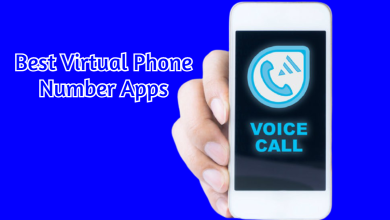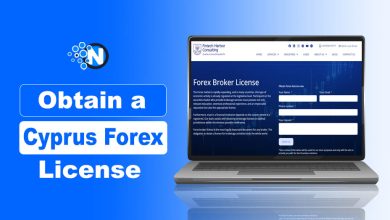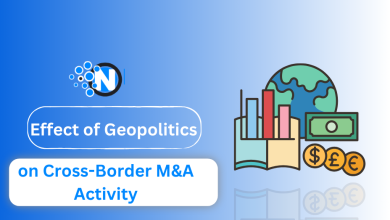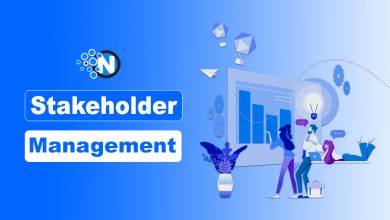A Telemedicine App – Is It The Right Fit For Healthcare Businesses?

Our society appears to be on the verge of a revolutionary networked healthcare business. Accelerated telemedicine app development seems to be a realistic and acceptable trend worldwide around 2021. This owes, in particular, to the considerable worldwide difficulties that are compelling healthcare institutions to restructure. Furthermore, medical organizations are increasingly favoring remote healthcare delivery services due to the numerous perks it brings to both clients and specialists. Not to add, digital healthcare has a lot more potential.
During that 2020 Value-based Healthcare Conference, a vast number (96 %) of business professionals predicted that Telemedicine’s position throughout the industry could go even farther than COVID-19.
Telemedicine app development addresses a natural desire in the electronic era: connecting patients and physicians closer together without the requirement for lengthy hours on the road while yet receiving every one of the advantages of treatment. That said, though, Telemedicine must form such an intrinsic component of the medical sector in the upcoming years that it will no longer be referred to as “Telemedicine,” but rather as just one means to communicate with peers or sufferers. Let’s go over some important Telemedicine facts you may not be aware of to set for that time.
What exactly is Telemedicine?
The World Health Organization defines Telemedicine as “the supply of medical care solutions where individuals and caregivers are split by location.” Defined, telemedicine solutions entail using communication systems to connect healthcare practitioners to their sufferers and one another across long distances. Telemedicine presents itself in various forms, revolving around data transport and interaction. Telemedicine is already being practiced if your clinic examines individuals over the telephone.
During the COVID-19 worldwide pandemic, the phrase build a Telemedicine app has become more significant, and it began to move health services to the future level. The primary purpose of Telemedicine has been to give patients high-quality, cost-effective medical services no matter where they live. It is especially useful in isolated places, vulnerable groups, and elderly people.
The Advantages of Telemedicine Application Development:
A telemedicine app seems to be a type of software used to give patients various healthcare solutions. A telemedicine app appears to be a type of software used to provide patients with various healthcare solutions, from facilitating the issuance and management of weight loss prescriptions to providing remote monitoring and support for patients with mental health issues.
The notion entails creating unique software that lets both customers and physicians remotely interact and check health status, receive direct access to clinical information at any moment, decrease paperwork, and other benefits. The following are the key factors why many companies and entrepreneurs decide to invest in telemedicine application development.
Healthcare expenditures are being reduced:
Aside from reducing needless hospital visits, physicians and clients can interact via a smartphone application to achieve those same aims. From the client’s perspective, simple access to medical facilities saves cash on expensive hospital visits. As a result, individuals are less vulnerable to numerous ailments and have a higher level of satisfaction when they can access healthcare facilities 24 hours a day, seven days a week.
From the physician’s end, there are even more chances to be self-employed as well as provide treatments without requiring a different working space. The advantages of telemedicine apps are promoted autonomy and customer mobility. Telemedicine applications may often provide shorter sessions, healthier talks, and quicker medical answers. Consequently, care service income will climb dramatically while maintenance expenditures will decrease. The Healthcare business has benefited from this app.
Time-saving benefits for physicians, treatment processes, and clinical tasks:
It is critical to provide medical treatments on schedule. More flexibility over the distribution of hours for medical consultations allows for more flexible planning and quicker and extra successful patient assessment. Patients can use this telemedicine platform to schedule a session at a time that is suitable for both sides. This capacity to considerably accelerate screening and therapy allows clinicians to better manage their schedules for other healthcare situations and patients, making it easier for professionals such as travel physical therapists, for example, to consult patients remotely.
Accessibility to medical services, both directly and indirectly:
Direct connection to the healthcare industry is especially crucial for persons living in remote areas. Because of the characteristics of the telemedicine software, even those living in places with no healthcare facilities may access such services remotely through a cellular connection as well as Wi-Fi. Theoretically, medical consultations can also be supplied to persons who are travelling or residing in another nation.
There is less lack of medical personnel:
Because the need for in-person medical visits has decreased, physicians may better organize their schedules and concentrate on timely client appointments for those with more serious health concerns. When utilizing the app’s capabilities, a doctor’s visit may be readily observed in this manner. There seems to be an option to administer a doctor’s workload and manage his\her balance between work and life with more advanced app capabilities. These will help alleviate the regular scarcity of medical personnel in hospitals.
EHR (Electronic Medical Records) accessibility is simple:
Accessibility to a client’s clinical information not only reduces a doctor’s effort but also aids in maintaining their health information updated. In this manner, undesirable pharmaceutical mistakes and improper patient clinical services can be avoided. Another of the very important elements to remember now is to implement the most strong security policies into your solution to keep client medical information safe.
Features of Telemedicine Application Development
After determining the increasing value of telehealth platforms, it is important to evaluate the variations in telemedicine application functionalities for users and physicians. In the meantime, we will give a characteristic list that includes the most critical functions that are essential in both jobs. The capabilities of the program for clients and physicians differ mildly.
Patients Can Benefit From Telemedicine Application Features
Method of registration:
A registration type should be included on the client’s end so that clients may establish a personalized profile and view Electronic health records. Since the person’s information must be shown within the telemedicine software, this functionality is vital. Two-step verification will offer adequate data protection. Login choices include third-party technologies such as Facebook Registration, Google Login, and personal email.
Maintenance of profiles:
The following stage is to take care of this person’s information. Gender, age, residence, locality, time difference, contact information, email, backup number lists, and so on are examples of user information. This functionality should also show information about prior visits as well as the user’s Electronic health records. Doctors may then review their treatment histories and better understand the client’s health issues.
Statistics on payments:
The payment mechanism is another critical component of any telemedicine service. Security comes primarily whether you design a proprietary payment solution or connect third-party services. When connecting payment processors including Mastercard, Braintree, as well as PayPal, an extra cost will be applied to each activity. Developing your payment method is a much more sophisticated procedure that needs a significant level of technological skill.
Advantages of Telemedicine Apps for Physicians
We’d like to highlight certain variations from the client application feature listed below.
Profile of the physician:
Physician accounts should include information about their medical competence, background, and expertise to help prospective patients create trust and identify the right specialist for them.
In-app schedule:
Physicians can use schedules to serve as administrators, confirm patient sessions, and arrange them when possible. When patients reschedule their appointments, physicians will also have to confirm otherwise offer comments to the client.
Communication on both sides:
Two-way communication must, of course, be provided on the technological part of telemedicine applications for physicians. They would be allowed to remotely deliver health treatment and examine probable damage to clients or identify any indicators of disease via in-app conversations, audio, and video chatting. All communication channels must have a high level of efficiency and security while transmitting sensitive data.
Conclusion
With all of that stated, you may assume that telemedicine application development has also demonstrated to become the most successful business concept on the planet. Electronic healthcare solutions are gaining popularity due to their ability to provide exceptionally rapid medical service supply while also delivering personal comfort and resource efficiency.
Building a legitimate and feature-packed telemedicine infrastructure and assuring acceptable security, transparency, and digital storage reliability appears to be a significant problem. True in the sense that legal conformity is getting increasingly stringent. Nonetheless, even the most difficult issues may be researched and addressed in phases. The initial step is often the most difficult, but a skilled healthcare software development company is always available to assist you throughout the road.




